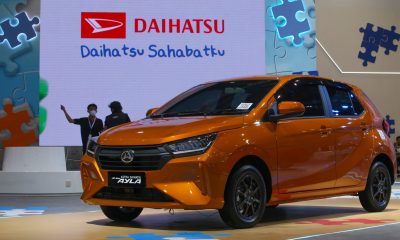BUSINESS NEWS
Global Impact of Children’s Content: How the Industry is Changing and What’s Behind It
Just ten years ago, children’s content was largely a local phenomenon. Television channels broadcast a limited number of cartoons and educational programs tailored to specific countries. However, the rise of digital platforms, particularly YouTube, has completely transformed this dynamic. Today, children’s content is a powerful industry that can rival cinema in terms of production quality, audience engagement, and global influence.
“Ten years ago, no one could have imagined that content created outside major studios could reach millions of viewers worldwide,” says Yurii Alieksieienko, director of one of the largest children’s YouTube channels, Like Nastya.
How YouTube Turned Children’s Content into a Global Phenomenon
Previously, each country produced its own cartoons and shows, adapted to local culture. Now, video content transcends borders. Visual imagery, intonation, rhythm, and editing have become a universal language that requires no translation.
“Children’s videos are no longer restricted by language barriers. A well-structured scene, the right color palette, and the emotional expressions of characters allow children of any nationality to understand the content,” explains Alieksieienko.

The Secrets of Effective Children’s Content
Creating videos for children is not just an entertainment activity; it is a complex process that requires an understanding of child psychology.
“Children perceive information differently from adults. They need a clear emotional signal: if a character is happy, it must be evident not only through facial expressions but also through colors, music, and the overall mood of the scene,” emphasizes Yurii.
The main challenge is making content not just bright but also comprehensible. The plot dynamics must be logical and consistent so that children can easily follow events and understand cause-and-effect relationships.
Legal and Ethical Challenges
Beyond creativity, children’s content creators must navigate numerous regulations and restrictions. YouTube frequently updates its policies regarding advertising, audience interaction, and content safety for children.
“Working on children’s videos is not just about creativity; it’s also about legal literacy. It’s crucial to understand which topics are appropriate, how to handle interactivity properly, and how to ensure compliance with safety standards,” says Alieksieienko.
Accessibility of Content for All Children
One of the key aspects of modern children’s content is inclusivity. Videos must be accessible to children regardless of their developmental characteristics.
“Not all children can read subtitles or perceive audio clearly. That’s why we pay special attention to visual symbols, character movements, and color choices, which help convey meaning even without words,” Yurii explains.
Moreover, more and more children’s shows include characters with disabilities, helping to foster tolerance and a positive attitude toward diversity in society.

How Digital Content Shapes Children’s Thinking
Today’s children consume information in a completely different way than previous generations. Fast-paced editing, dynamic storylines, and short-form content are shaping a new style of thinking.
“Kids are getting used to instant emotional impulses and rapid changes in events. This can make it harder for them to develop concentration and analytical thinking. Our goal is to combine entertainment with education so that content not only entertains but also fosters development,” Alieksieienko emphasizes.
The Future of Children’s Content
Today, children’s content is not just a part of the entertainment industry—it is a phenomenon shaping the worldview of a new generation. YouTube and other digital platforms have turned video into a tool for education, social adaptation, and emotional development.
Yurii Alieksieienko works in Florida, USA, creating content for Like Nastya, one of the largest children’s YouTube channels in the world. The channel has received YouTube’s Red Diamond Creator Award, an achievement shared only by the biggest content creators, including MrBeast. With over 350 million subscribers, Like Nastya is one of the key players in children’s video production.
“The primary goal of modern children’s content is not just to entertain but to educate, nurture empathy, and help children explore the world in a safe environment. If we, as creators, recognize this responsibility, we can produce content that truly impacts the future,” concludes Alieksieienko.









